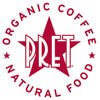Poultry Goes Premium
With sophisticated menu items, upgraded interiors, and a laser focus on the customer experience, the chicken segment is moving upmarket.
For some brands, losing the long-held title of No. 1 limited-service chicken chain would feel defeating. But when KFC gave up its leading role this year to fellow quick serve Chick-fil-A, it wasted no time in getting back on its feet by introducing Original Recipe Boneless Chicken—a platform it hopes to make the brand’s biggest focus over the next few years—and, perhaps most noteworthy, by unleashing KFC eleven.
The fast-casual spinoff, which debuted in August in KFC’s home market of Louisville, Kentucky, serves menu items like Sweet Orange Ginger Flatbreads, California Club Chicken Sandwiches, Southwestern Baja Rice Bowls, and Garlic Smashed Potatoes, all made fresh to order in front of guests (and with hardly a single bucket of fried chicken in sight). The sleek interior features wood detailing and a softer color scheme of browns, whites, and greens. Inviting details like art installations and free WiFi encourage guests to kick back and stay awhile.
KFC’s new sister concept is not only proof that even the most storied and traditional brands in quick service are feeling the need to experiment with fast-casual elements—just look at Wendy’s remodel, which includes fireplaces, lounge seating, and HD TVs—but is also a sign that the limited-service chicken segment as a whole is taking on a more premium image in terms of product, service, and environment. Chick-fil-A, Popeyes, and other chicken quick serves have also shown that the premiumization of chicken—whether in the traditional sense of fast casual or not—is in full flight.
El Pollo Loco, a Mexican-style grilled-chicken chain, shies away from calling itself a fast casual, even though it offers premium, fire-grilled, citrus-marinated chicken products in an upscale environment.
“We operate in a place called ‘QSR-plus,’” says Ed Valle, chief marketing officer for the nearly 400-unit chain. “‘QSR-plus’ is a place where the need for distinctive, authentic food meets the need for speed. And the ‘plus’ means better service, better food, and better environment.”
It’s the product side of the equation in particular, thanks to consumers’ increasingly sophisticated palates and thirst for food that’s high quality and unique, that lies at the heart of the push for premium chicken, many industry experts say.
“The consumers are looking for a better product now. They’re more educated; they’re more mobile than they used to be,” says Heather Gardea, vice president of research and development at El Pollo Loco. This shift, she says, benefits the grilled-chicken brand. “We were in a sweet spot to be there before our competitors because we already brought in fresh chicken, we already marinated it by hand, and we fire-cooked it.”
At El Pollo Loco, this emphasis on fresh ingredients and authentic preparation methods is key to the brand’s premium image. The chain has not only upped its take-home meals game—adding superior salads with fresh ingredients like whole avocado, applewood-smoked bacon, pico de gallo, chopped romaine, and made-from-scratch dressings—but it also created new forms of familiar products and existing lines, such as tostadas and quesadillas with bell peppers, onions, and chorizo.
At Zaxby’s, a 23-year-old, Atlanta-based chicken concept that CEO Zach McLeroy calls “the pioneer of premium, fast-casual chicken”—a pioneer that just this year passed the $1 billion sales mark for the first time—it’s the freshness and authenticity of the ingredients and menu items that give it an upscale edge.
“Our food is just premium,” he says. “It’s cooked to order, it’s fresh, unlike what anybody else is doing. Everybody else is cooking out of the bag or cooking in advance. That wasn’t our idea. Our idea was to make it fresh for our guest, and I think it’s what separates us from everyone else in the industry.”
The brand’s emphasis on preparing food in-house also motivates its cooks and kitchen staff, which ultimately translates to a more premium experience for the guest. “It’s something that gives our cooks and our kitchens a sense of pride and differentiation from someone who works in fast food,” McLeroy says. “They’re actually creating things; they’re not just pushing buttons and grabbing something out of a box.”
Popeyes Louisiana Kitchen has discovered that it’s not just what the product is or how it’s made that creates an upscale menu offering, but it’s also about the inspiration behind it. When it launched a major rebranding effort five years ago, Popeyes went back to its Louisiana roots, which global brand officer Dick Lynch says inherently made the chain more premium.
“When you think of the great Louisiana Cajun and Creole food, it is by its nature not expensive, but it’s certainly premium because it’s an interesting regional American cuisine,” he says. “As we used that as our inspiration, we just naturally heightened the culinary bar in [quick service]. We raised expectations about what you can and should expect from chicken [quick serves].”
Lynch says Popeyes is focused on premium product platforms like its Wicked Chicken, Butterfly Shrimp, and Handcrafted Tenders, all of which it continues to innovate through a range of flavor proliferations (such as Garlic Pepper Wicked Chicken, Zatarain’s Butterfly Shrimp, and its most recent release, Chicken Waffle Handcrafted Tenders).
Though chicken is the natural focus for brands in the segment, premiumization is coming on the non-chicken side of the menu, too. For guests looking to indulge, the addition of high-quality desserts—namely, milkshakes—has lent a high-end feel to many chicken chains’ menus. Zaxby’s recently replaced its standard milkshake menu with the popular Birthday Cake, Banana Pudding, and Chocolate Cookie flavors, which helped the brand grow from an average 12 shakes sold each day per store to more than 50. Chick-fil-A has also been expanding its milkshake game over the years, adding a Mocha Milkshake as a recent limited-time flavor.
Aside from desserts, a notable portion of innovation in the premium chicken segment has centered on wraps and salads, says Darren Tristano, executive vice president of foodservice research firm Technomic. With a growing minority of limited-service customers looking for healthier options in all segments of the industry, nutritious offerings, whether in the form of grilled chicken, salads, or other better-for-you menu items, play a role in the upscaling that’s underway in the chicken segment.
Zaxby’s has capitalized on the desire for healthy products with the rebranding of its salad lineup, which it gave the name “Zalads” several years ago.
“Literally overnight, we went from selling about 30 a day per store to over 130, and I think that number tops over 200 in some of our outlets today,” says COO Robert Baxley. “It’s a product that we haven’t been satisfied with where we are. We’ve just been constantly moving the needle on that.”
Chick-fil-A has also been mixing up its salads, scrapping the old lineup entirely and opting for a trio of hand-prepared salads, along with a new wrap and fresh dressings, earlier this year. The salads include premium ingredients like roasted corn kernels, crumbled bacon, blue cheese, and honey Thai almonds.
Because it specializes in grilled products, Valle says, El Pollo Loco gets an added benefit from serving these items to consumers who crave something both healthy and higher quality. “The nutritional part is very important for people when they think about the flavor from the grilled chicken [combined] with the nutritional benefits of it,” he says. “For us, that combination has worked exceptionally well over the last two years in terms of how our business is doing.”
But the use of grilled and otherwise healthy products in the chicken segment isn’t the only way to up the premium game, and it certainly won’t push traditional fried chicken aside, says Dennis Lombardi, executive vice president of foodservice strategies for restaurant consulting firm WD Partners.
Back








